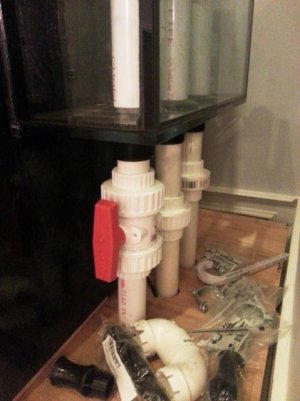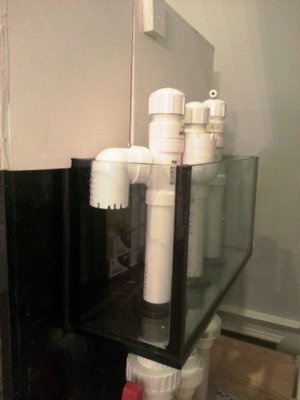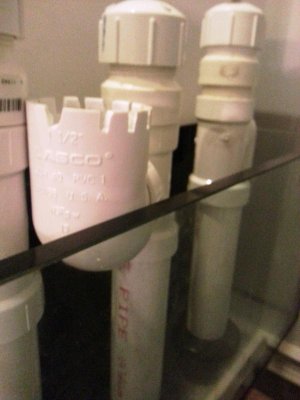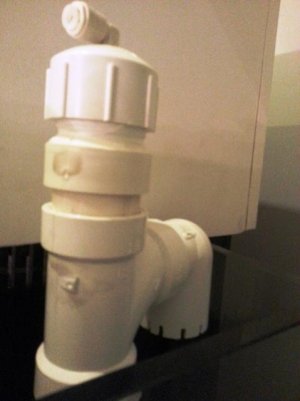SkyReef
New member
Thickness of Glass on External Overflow Box
Thickness of Glass on External Overflow Box
I'm using a BeanAnimal Design on a 75-gallon tank, which utilizes both an internal overflow box (weir) and an external overflow box. Both overflow boxes are the width of the tank, 48 inches. The external overflow box = 48" wide x 8" tall x 5" front-to-back.
Question: is it sufficient to use 1/4" glass for the external overflow box, on all its pieces--sides, bottom, and front, or should I use 3/8" glass at the bottom of the external overflow box, using 1/4 on the sides and front? Has anyone ever used an external overlfow box on a BeanAnimal design using only 1/4" glass, with a width as wide as 48"? I will be using glass triangles for supports, such that one edge of each triangle will be siliconed to the back of the tank, and the other to the bottom of the overflow box. Perhaps such extensive support might permit me to use only 1/4" glass. What do you all think?
Thank you.
Thickness of Glass on External Overflow Box
I'm using a BeanAnimal Design on a 75-gallon tank, which utilizes both an internal overflow box (weir) and an external overflow box. Both overflow boxes are the width of the tank, 48 inches. The external overflow box = 48" wide x 8" tall x 5" front-to-back.
Question: is it sufficient to use 1/4" glass for the external overflow box, on all its pieces--sides, bottom, and front, or should I use 3/8" glass at the bottom of the external overflow box, using 1/4 on the sides and front? Has anyone ever used an external overlfow box on a BeanAnimal design using only 1/4" glass, with a width as wide as 48"? I will be using glass triangles for supports, such that one edge of each triangle will be siliconed to the back of the tank, and the other to the bottom of the overflow box. Perhaps such extensive support might permit me to use only 1/4" glass. What do you all think?
Thank you.









